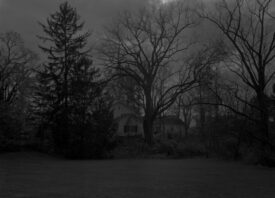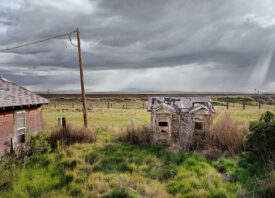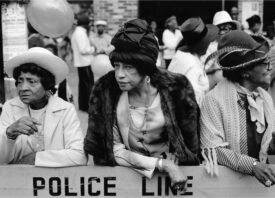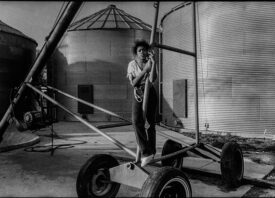Search this site
Riveting Photos Trace the Historic Underground Railroad at Night
“Decision to Leave” Magnolia Plantation on the Cane River, Louisiana
“Wading Prior to Blackness” Grant Parish, Louisiana
“The Underground Railroad was America’s first Civil Rights Movement,” says the photographer Jeanine Michna-Bales, who has spent the past ten-plus years researching the railroad for her project Through Darkness to Light. Finding that there were few visual records of the stations along the escape route, she herself traced the steps taken by many of the 100,000 enslaved people between the Southern plantations of Louisiana to the border of Canada. Along the way, she creates an archive of historical sites both famous and little-known, discovered through academic inquiry at historical societies and oral histories passed down through generations.
Via the railroad, enslaved people traveled alone and in groups at an approximate pace of twenty miles per night. Now, Michna-Bales shoots after dark. After examining each station during the day, she sometimes had to score the spot with a plastic bag lest she lose her way in the night. Some safe houses had not been well documented; after reading accounts, she would work from a general area, searching and asking around for old houses. Many homeowners confirmed her hunches and led her to other buildings along the railroad.
In Michna-Bales’s photographs, the land and its remaining structures are forever haunted by the ghosts of the past, reminding us of both our potential for good and unimaginable evil. The railroad, Michna-Bales explains, serves as a powerful indication of what can be accomplished when people of different races, religions, and economic positions come together, risking their lives for the larger objective of freedom and human rights.
Through Darkness to Light is an ongoing project that Michna-Bales plans to complete by December of this year. Of the eighty images she hopes to include in the final exhibit and book, she has twelve remaining.

“Moonlight Over the Mississippi” Tensas Parish, Louisiana

“Hiding Out Back” Slave Graveyard; Mount Locust Stand and Plantation; Jefferson County, Mississippi

“Off the Beaten Path” Along the Yockanookany River, Mississippi

“Cypress Swamp” Middle Mississippi

“Stopping for Directions” Meadow Woods Plantation; Oktibbeha, Mississippi

“Hidden Passageway” Mammoth Cave, Kentucky

“Hunter’s Bottom” Just Across the Ohio River; Outside of Madison, Indiana

“On the Way to the Hicklin House Station” San Jacinto, Indiana

“Follow the Tracks to the First Creek” Railroad Trestle Bridge; Vernon, Indiana

“Moonrise Over Northern Ripley County” Overlooking Southern Decatur County, Indiana

“Elias Conwell House” Lies Along Old Michigan Road; Major North South Artery Between Kentucky and Michigan; Napoleon, Indiana

“Go to the House on the Hill” Possible Underground Railroad Station; Cambridge City, Indiana

“Look for the Grey Barn Out Back” Station with a Tunnel Leading to Another Conductor’s House; Centerville, Indiana

“Welcome to the Fugitive Captive” Waiting for the All Clear to Head to the Capt. John Lowry Station; Lodi Plains Cemetery; Nutting’s Corner, Michigan

“Within Reach” Crossing the St. Clair River to Canada Just South of Port Huron, Michigan

“Freedom” Canadian Soil; Sarnia, Ontario
All images © Jeanine Michna-Bales





